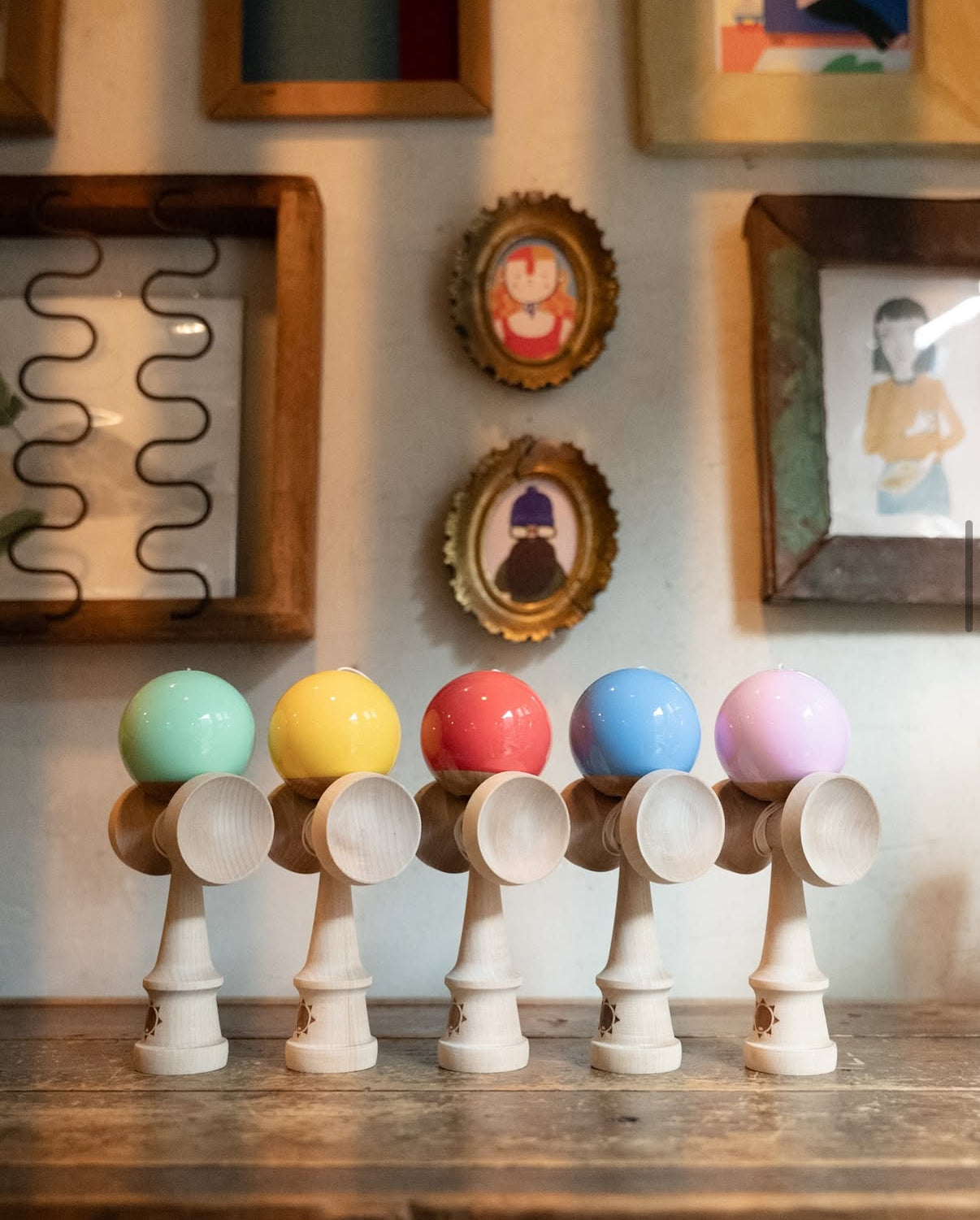
If you’ve ever searched for the best kendama, you already know that there are so many options out there. Tons of different shapes, wood types, and designs that make it hard to know what kendama to choose. Whether you’re a beginner learning your first spike or a seasoned pro, the best kendama for you depends on a few key factors: durability, design, and community impact.
Let’s break it down.
Kendama design evolves fast. Brands are constantly making improvements to their shapes and designs.
A kendama made within the last two years will almost always outperform older models when it comes to the quality of the paint, kens, and design.
So when shopping, make sure you’re choosing something current. The latest shapes from leading brands like Kendama Co, Kendama USA, Sol Kendamas, Sweets Kendamas, Krom Kendama, and Lotus Kendamas are specifically refined for today’s playstyle.
Good tama tracking can completely change how consistent your play feels. Designs like stripes, halfsplits, and 70/30 designs make it easier to spot the hole and land tricks.
Here’s why:
Horizontal contrasts help your eyes follow the rotation of the ball.
Contrast in colors from the top to the bottom of the tama helps tracking rotations and increases your likelihood of spiking your tricks.
Clean, simple designs (rather than overly complex graphics) are best for focus and accuracy, however a well-designed intricate design can also accomplish this.
✨ Pro tip: The Kendama USA Halfsplit series and Sol Kendamas Pastels collection are great examples of tamas with perfect tracking and color contrast.
Wood choice affects both feel and longevity.
Maple – The premium option. Maple kendamas are very durable, have a solid average weight, and age beautifully. They cost a little more, but they’ll last longer and sound incredible for spikes and taps.
Beech – The best entry-level wood type for kendama. Beech kendamas are softer, more affordable, and still plenty durable for everyday play. Ideal for new kendama players or anyone on a budget.
If you’re just starting out, go for beech. Once you’re ready for your next upgrade, move to maple for the best long-term performance.
Many kendama companies release pro model kendamas — custom designs made with and by professional players. When you buy a pro model, a portion of that sale goes directly to the player.
This support helps pros travel, compete, and create new content that pushes kendama forward.
Buying pro models isn’t just about the design — it’s about investing in the future of kendama and the people you want to support within the community.
The best kendamas don’t just play well — they come from brands that do well for the community. Look for companies that host competitions, sponsor events, and teach new players.
These brands keep the culture strong and make sure kendama stays more than just a toy. Kendama is a sport, art form, and a global community of really amazing people.
Kendama Co, Kendama USA, Sol Kendamas, Sweets Kendamas, Krom Kendama, Grain Theory, and Lotus Kendamas are leaders in this space, consistently running events and supporting players around the world.
Some of the most memorable kendamas are collaborations between brands and artists within the community. These designs are unique, sustainable, and tell a story. Supporting artist-driven projects keeps kendama culture authentic and thriving.
The best kendama for you depends on where you are in your journey.
Beginners: Try a beech wood kendama with a halfsplit or 70/30 tama design for easy tracking.
Intermediate to advanced players: Go for maple wood and a pro model from an active brand like Sol Kendamas or Kendama USA.
If you want our top picks:
✅ Kendama USA Halfsplit – Timeless design, perfect for visibility and consistency.
✅ Sol Kendamas Pastels – Smooth tracking, beautiful colorways, and top-tier performance.